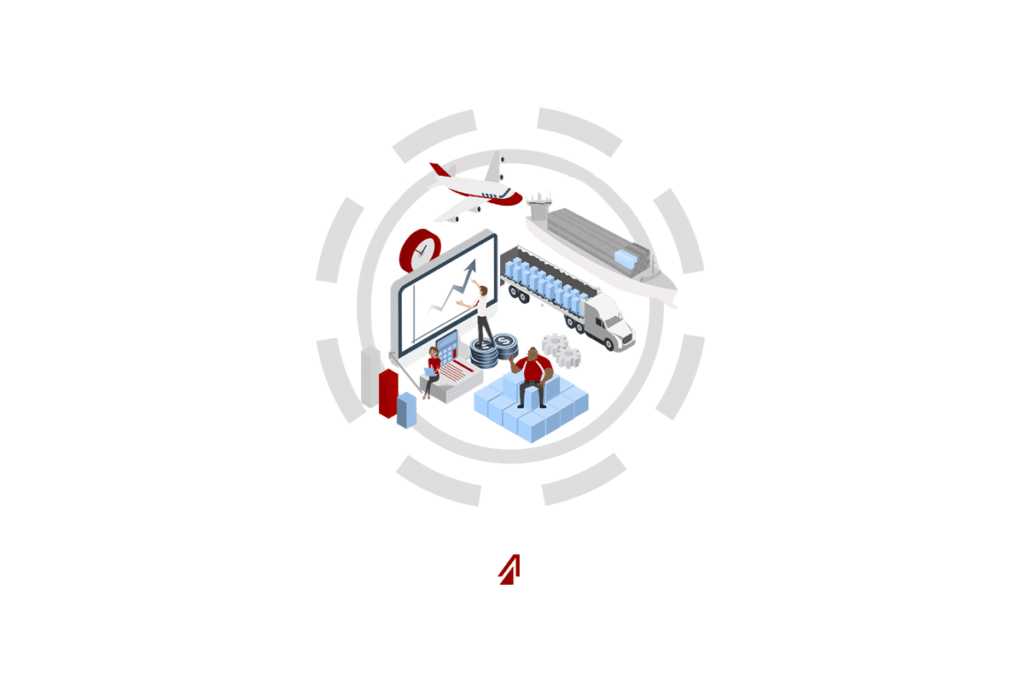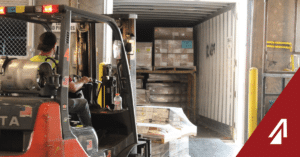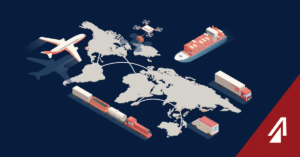Coronavirus
One of the most significant events to affect North American logistics in February was the launch of the Canadian Freedom Convoy in Ottawa, Canada. This was an occupation of the Canadian nation’s capital by Canadian truck drivers, and others, in response to the COVID 19 vaccination mandates. The protest began on January 22, 2022, in provinces across Canada, where hundreds of semi-trucks and other vehicles converged on the Canadian capital, blocking access to much of the downtown Ottawa area, the Canadian capitol building, and other key cross-border points. The protest lasted until February 23, 2022 and is said to have caused as much as $6 billion in loss for the Canadian economy.
GDP
According to the Philadelphia Federal Reserve, the annual GDP growth rate for Q1 of 2022 will fall short of earlier projections. While analysist predicted a 3.9% growth, the actual growth rate will be closer to 1.8%. Looking ahead, “using the annual-average over annual-average computation, the panel expects real GDP will grow at an annual rate of 3.7 percent this year, 2.7 percent in 2023, and 2.3 percent in 2024.”
Employment
The unemployment rate fell to 3.8% in February. Job growth was widespread through several sectors including leisure and hospitality, professional and business services, healthcare, and construction. The labor force participation rate has risen to 62.3% from 62.2% in January.
Inflation
Inflation has continued to rise. In February, the inflation rate has reached another record of 7.9% – the highest since January 1982. The sectors seeing the highest inflation include energy (25.6% increase), gasoline (38% increase), shelter (4.7% increase), food (7.9% increase), and vehicles. The Bureau of Labor Statistics sites the rise due to a coupling of the Russian invasion of Ukraine with ongoing supply constraints, strong demand, and labor shortages. Each of these are a significant concern and will likely not be resolved shortly.
Manufacturing
The HIS Markit US Manufacturing PMI did not meet previous projections for February. The PMI reached 57.3, down from the estimated 57.5, but remained above January’s 55.5 rating. This growth signals stronger manufacturing sector health that is mainly due to stronger new sales growth, employee retention, and reduced supply chain disruptions.
Interest Rates
The Federal Reserve has currently maintained its rate of .25 but has signaled that it may soon raise interest rates.
Capacity
Capacity by mode has seen some significant shifts from January. For instance, spot load shipment requests fell 12.8% from January; and with a 3.9% increase in available trucks, the US spot rate market found itself in its best position in the last 6 months. Also, with the dissolution of the Freedom Convoy, freight has flowed more freely across the northern US border.
Air transportation had decreased in Texas due to winter storm issues, but increased in Canada with Air Canada announcing plans to add seven new routes by summer of 2022.
Ocean capacity continues its congestion at Ports of LA and Long Beach, in spite of progress being made in January to move record high volumes. On the East Coast, the Port of Charleston is battling its own congestion problems stemming from higher cargo volumes, bad weather, and significant labor shortages.
Regulations
The US Maritime Administration announced that it will provide nearly $450 million in grant funding to help ports speed cargo flows with the hope that it will ultimately lower costs to consumers. These funds come from the $1.2 trillion infrastructure law, under the $2.25 billion allocated for the program for years 2022-2026. This is roughly equal to the entire amount spent on federal port funding from 2009-present.
Rates
The national truckload rate per mile fell in February by $.01 to $3.09 per mile. However, due to rising freight costs, higher demand, and other national concerns, this is still 28.5% higher than February of 2021.
Behaviors
According to Nielson, the top consumer concerns for February 2022 include rising prices for products and services, an expanded view of personal wellness, and continued issues with item availability.
Technology
One of the highest technology concerns for February are document recall and data processing. A recent survey showed that as many as 70% of the supply chain executives surveyed plan on upgrading their intelligent document processing. The goal to be increase employee usability and enhance their experience as well as increasing employee skills and increasing company resilience.
Fuel Impact
Fuel prices has consistently risen week-to-week. Diesel prices have increased 8.3% since January and have risen 41.6% since the same time last year.
Driver Concerns
An ongoing concern for many drivers across North America is the COVID-19 vaccination mandate. While the Freedom Convoy in Canada has been disbanded, its cousin in the US is just beginning. US drivers are converging on Washington DC throughout February and March with a stated mission to increase personal health decision freedoms as well as maintain civil rights. This convoy is expected to disrupt US supply chains and affect the US economy.



